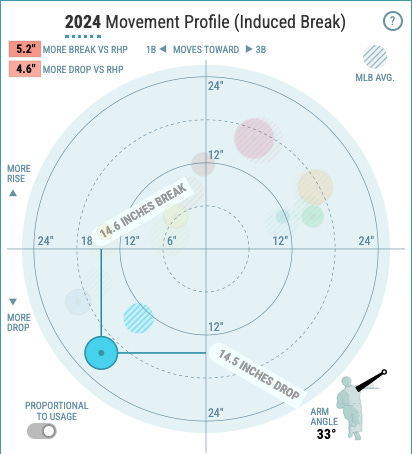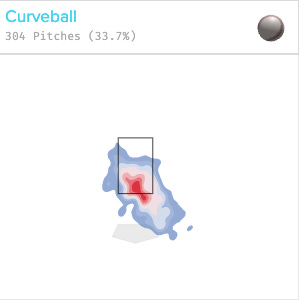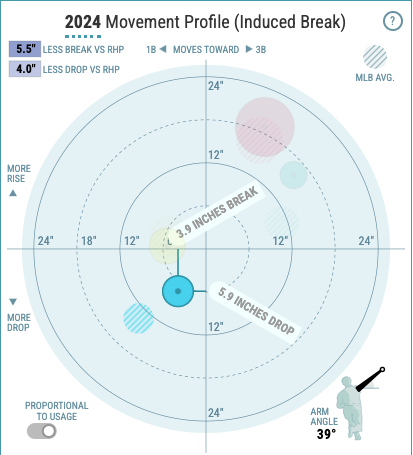Applying the Power of Pitch Modeling to Kansas City's Staff
What is Stuff+ and how do Royals pitchers (and their individual pitches) grade?
The proliferation of advanced statistics in sports is a beautiful thing. Particularly in MLB, the raw data — batted ball exit velocity, pitch velocity, running speed, bat speed and so much more — is right there at our fingertips. Can you imagine 20 years ago being able to find how hard your favorite player mashed that home run last night? Or, in an instant, sorting every single pitch from a particular game to find out who lit up the radar gun?
Heck, you can find this information in the middle of a game now — easier than you can find a cheap beer at the K. I often watch Royals games from the comfort of my couch, the action on my big screen and Baseball Savant on my iPad. I can know before Salvador Perez whether or not the rocket he launched into the fountains registered a new maximum exit velocity or was another run-of-the-mill moonshot.
No longer are we left guessing whether a slumping slugger is struggling at the dish or simply running into tough luck with hard hit balls right at defenders. And no longer are we simply leaning on the eye test to gauge the effectiveness of a pitcher’s “stuff.”
That’s what Stuff+ does for us.
If you’re familiar with pitch modeling and what it attempts to measure, you can skip this section and jump to how it grades the Royals staff. But I do quickly want to touch on what Stuff+ tells us and, maybe more importantly, what it doesn’t.
Here’s a full definition from Owen McGrattan and FanGraphs:
As that last line eloquently states, we’re looking for nastiness. As with other “+” metrics (OPS+, wRC+, etc.), a grade of 100 represents league average.
Quick aside before we get to the Royals angle: One mistake people often make when using advanced data is assuming it’s the end all, be all. Brendan Tuma summarized this beautifully in a newsletter about Stuff+ in 2023, and while I encourage you to check it out in its entirety, one particular line stands out:
“(Stuff+) isn’t a player’s entire value boiled down to a single number. It’s a tool.
And I think this has been lost in translation.”
So when you see Seth Lugo (with a Cy Young silver medal) grades out with a below-average arsenal, remember Stuff+ is just that — one tool among many to uncover why a player is succeeding or failing.
With that, let’s get to the goods.
How Does Stuff+ View Royals Pitchers?
This list includes all Royals pitchers who tossed at least 10 innings in 2024, and for the sake of including the newest bullpen weapon, below is how Carlos Estevez graded over his career, including last season in stints with the Angels and Phillies.
Two more quick notes then I swear we’ll talk about the Royals:
Relief pitchers naturally grade out better since velocity is a key component of Stuff+, so the ability to air it out over shorter stints gives them an edge — meaning the “his stuff will play up in the bullpen” cliche actually rings true. (I felt the earth shake when your jaw hit the floor seeing Matt Sauer grade out better than Lugo.)
One of the characteristics of Stuff+ that makes it so powerful is the small sample size required for it to become reliable — just 80 pitches. So, yes, Lucas Erceg’s 25 innings as a Royal are perfectly sufficient to trust. For reference, his Stuff+ rating for the entire season, including his work in Oakland, was 110.
The leader in the Kansas City clubhouse is no surprise. Ragans, the ace of the staff and 4th-place Cy Young finisher in 2024, finished the season with a 32% whiff (90th percentile in MLB). He boasts four above-average pitches and a fifth, the cutter, that grades out better than a lot of starters’ second-best offering. There is no fluff or fluke about the flamethrowing southpaw — his arsenal is nasty (which you knew) and it’s supported wholeheartedly by the data.
Next comes a slew of relief arms, but if we hone in on the starters, you’ll see Wacha at league-average (carried largely by the changeup), Lugo (whose deep arsenal offsets a lack of individual nastiness), Marsh (four pitches that grade 90 or better) and Lorenzen (whose sinker grades out much better than his four-seamer but caught too much of the plate too often in 2024).
We’ll have time as the season goes to dive into individual arsenals, but for today, I want to highlight the best of the best.
Four-Seam Fastball: Cole Ragans (107 Stuff+)
Back to the well. At the core of Ragans’ repertoire is his 95.4 MPH heater, and while its not his best pitch, it’s the one that sets the table for his breakers and changeup.
Stats against: .213 AVG, .361 SLG, 23.1% whiff
Honorable mention: Kris Bubic, Carlos Hernandez (103)
Sinker: Lucas Erceg (123 Stuff+)
The in-season addition of Erceg not only solidified the Royals bullpen, he provided Matt Quatraro with a versatile weapon to be used in the toughest moments of the game. Whether in a fireman role or closing out the 9th inning, Erceg used his 98.5 MPH sinker 21% of the time (and almost exclusively against right-handed hitters) to induce weak contact and generate groundballs.
Stats against: .220 AVG, .237 SLG, 20.4% whiff, 68.1% GB
Honorable mention: Angel Zerpa (117)
Cutter: Seth Lugo (98 Stuff+)
We’re not counting Kris Bubic’s version (149 Stuff+!!!) as he threw it only twice in 2024, per Savant (five times, per FanGraphs), but it’s certainly a pitch to keep an eye on moving forward as he did mention it’s one he plans to develop and use in 2025.
Instead, the honor goes to the crafty Lugo, who Savant charted as throwing nine different pitches last season, including this slow-motion cutter that behaves more like a loopy slider.
Stats against: .228 AVG, .228 SLG, 23% whiff
Honorable mention: Cole Ragans (96)
Slider: Cole Ragans (128 Stuff+)
One thing to note is the Stuff+ model loves sliders, so it’s more common to see these higher ratings for that pitch type. Ragans’ offering is especially nasty, however, resulting in the second-best slider among qualified pitchers in MLB. His isn’t of the hard-breaking variety though — it’s more of a bullet slider that he often starts on the glove side and breaks it off the plate (in the zone just 35.3% of the time) to generate chase. Here’s a look at where every slider landed last season (pitcher’s perspective):
Stats against: .210 AVG, .305 SLG, 33.7% whiff
Honorable mention: Matt Sauer (124); Angel Zerpa, Carlos Estevez (119)
Curveball: James McArthur (122 Stuff+)
When McArthur was going well every other month (April, June and August), the big, breaking curveball was landing glove side at the bottom of the zone, generating a ton of grounders and whiffs. But this Jekyll-and-Hyde hammer found the heart of the plate far too often and hitters took advantage. Remember, stuff isn’t everything.
Stats against: .268 AVG, .423 SLG, 36.7% whiff
Honorable mention: Matt Sauer (112)
Changeup: Michael Wacha (124 Stuff+)
If you were familiar with Wacha in any capacity before he got to Kansas City, you already knew the slowball was his bread and butter. He showed it off brilliantly after arriving, using it as his primary pitch against both righties and lefties. In fact, among qualified pitchers, it rates out as the best in baseball for its pitch type, just ahead of Tarik Skubal’s 123.
Stats against: .169 AVG, .312 SLG, 34.1% whiff
Honorable mention: Cole Ragans (110)
Knuckle-Curve: Carlos Hernandez (115 Stuff+)
Only three Royals employ the spiked curveball, but Hernandez’s still stands out as a quality offering. When he’s landing it effectively, it’s his best put-away pitch and plays well off his triple-digit heater despite throwing it harder and with less break than the average right-handed pitcher.
Stats against: .133 AVG, .400 SLG, 47.1% whiff
Honorable mention: Cole Ragans (102)
Heading into 2025, advanced data like Stuff+ gives us a great window into what Royals pitchers will try and do to get this team back to the postseason.
Now that’s good stuff.
















enjoyed this - thanks. Where/what sight would I find the "Movement Profile" diagrams?
Awesome read!